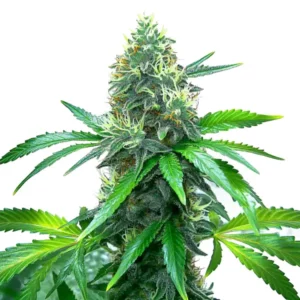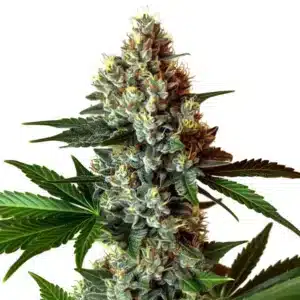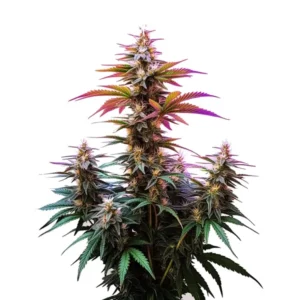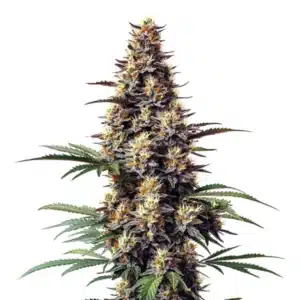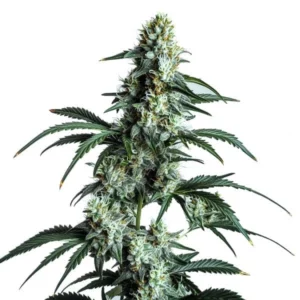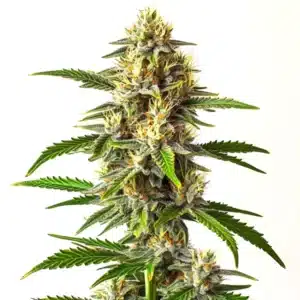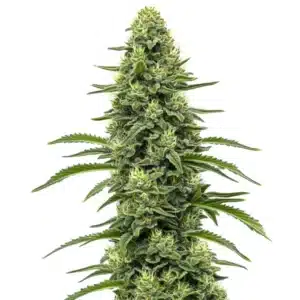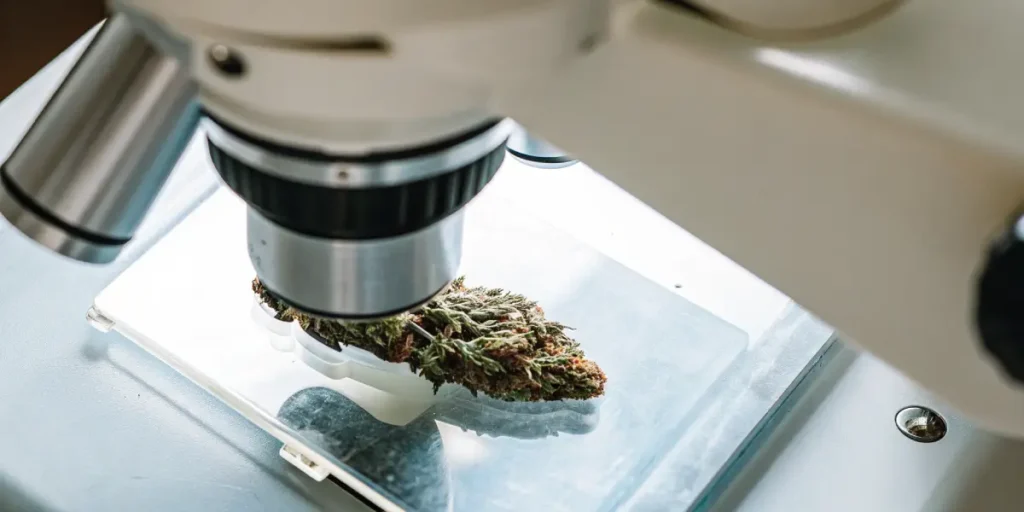
How Cannabis Produces Smell Molecules
Cannabis enthusiasts often marvel at the plant’s unique and varied aroma. But what exactly gives cannabis its distinct smell? The answer lies in knowing how cannabis produces smell molecules through an intricate biochemical process. The compounds responsible for cannabis odor are primarily terpenes, which are aromatic oils found in the plant’s trichomes.
These terpenes not only determine how a strain smells but also contribute to its flavor and effects. Each cannabis strain has a unique terpene profile, which is why different strains can smell like anything from pine trees to fresh lemons. Blimburn Seeds offers an array of strains, each with its own signature aroma.
Recommended Strains
Blue Dream
|
|
THC | 17% - 24% (Medium) |
|
|
Type | Feminized |
|
|
Yield | High |
|
|
Phenotype | 50% Indica / 50% Sativa |
OG Kush
|
|
THC | 20% - 24% (Medium) |
|
|
Type | Feminized |
|
|
Yield | Medium |
|
|
Phenotype | 55% Indica / 45% Sativa |
Let’s delve into how cannabis terpenes create aroma and what that means for growers and enthusiasts. By understanding the compounds responsible for cannabis odor, you can better appreciate the diversity of scents and find the strains that best suit your preferences.
Cannabis Plant Scent Molecule Production
The cannabis plant produces smell molecules through a natural process occurring in its trichomes. These small, hair-like structures on the plant’s surface are where terpenes and cannabinoids are synthesized. Trichomes protect the plant from pests and environmental stressors while giving it its distinct aroma.
Terpenes are not unique to cannabis. They are found in many plants and are responsible for the fragrant smells of herbs like mint and lavender. In cannabis, these compounds are produced in varying concentrations, creating a complex bouquet of scents. For instance, the strain Blue Dream from Blimburn Seeds is known for its sweet berry aroma, thanks to a rich terpene profile.
Understanding how cannabis produces smell molecules involves recognizing the role of trichomes in the plant’s defense system. Not only do these structures contribute to the plant’s olfactory signature, but they also serve as a barrier against herbivores and pathogens. This dual function highlights the evolutionary importance of terpenes in the cannabis plant.
Furthermore, the diversity of terpene profiles across different cannabis strains is a testament to the plant’s adaptability. By producing a wide array of aromatic compounds, cannabis can attract beneficial organisms while deterring threats. This adaptability is a crucial factor in how cannabis smell is generated and maintained throughout its lifecycle.
Biochemical Process of Cannabis Smell
Inside the trichomes, the biochemical process of cannabis smell begins with the synthesis of terpenes. This involves several enzymatic reactions that convert basic organic molecules into more complex aromatic compounds. This is similar to how essential oils are produced in other plants.
As the plant matures, the concentration and composition of terpenes change. Factors such as light exposure, temperature, and genetics play a significant role in determining how cannabis smell is generated. For example, strains like OG Kush from Blimburn Seeds develop a distinctive earthy scent as they approach harvest.
The biochemical process of cannabis smell is a dynamic one, with terpenes continuously being synthesized, stored, and released. This ongoing process is influenced by both intrinsic factors like the plant’s genetic makeup and extrinsic factors such as environmental conditions. Together, these factors shape the aromatic profile of each cannabis strain.
Growers aiming to optimize the scent of their cannabis crops should consider the timing of harvest and curing processes, as these can significantly impact terpene preservation. Proper curing allows for the slow volatilization of terpenes, enhancing the aromatic experience for consumers and showcasing how cannabis terpenes create aroma.
Promos & Deals
Compounds Responsible for Cannabis Odor
Several key compounds are responsible for cannabis odor. These include myrcene, limonene, and pinene, each contributing to a different aspect of the plant’s scent. Myrcene, for example, offers a musky, earthy aroma and is prevalent in strains like Sour Diesel.
Limonene, on the other hand, imparts a citrusy scent and is often found in strains with refreshing, lemony notes. Pinene is reminiscent of pine and is common in strains like Jack Herer. These compounds vary in concentration between strains, creating a wide range of potential aromas.
Besides the primary terpenes, cannabis plants also produce a variety of lesser-known aromatic compounds that contribute to the overall scent profile. These include terpinolene, caryophyllene, and linalool, each adding unique layers to the aromatic complexity of cannabis. Understanding these compounds helps deepen our appreciation of how cannabis produces smell molecules.
The complexity of cannabis aromas can be likened to that of fine wines or gourmet food, where a myriad of subtle notes combine to create a memorable sensory experience. This complexity is largely due to the intricate interplay of different terpenes and other aromatic compounds, emphasizing the sophisticated nature of cannabis plant scent molecule production.
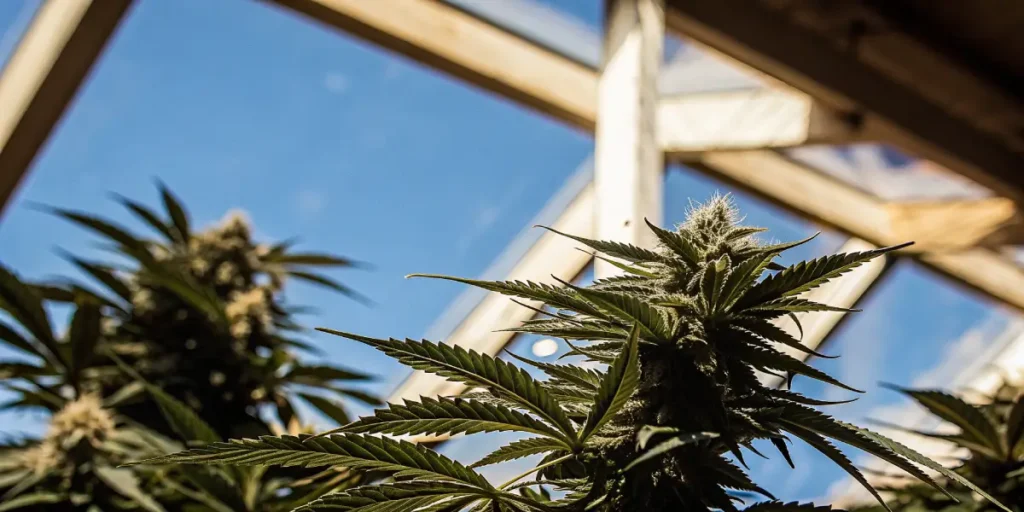
How Cannabis Terpenes Create Aroma
The way cannabis terpenes create aroma is a fascinating process. Each terpene has a unique structure that interacts with olfactory receptors in the nose. This interaction is what allows us to perceive the distinctive scents of cannabis.
When you open a jar of well-cured cannabis, the terpenes volatilize, releasing their aromatic molecules into the air. This is why freshly harvested and properly cured buds tend to have a stronger aroma. Strains like Gorilla Glue 4 from Blimburn Seeds are renowned for their pungent and robust scent, making them a favorite among connoisseurs.
In addition to their aromatic qualities, terpenes also play a role in modulating the effects of cannabinoids, a phenomenon known as the “entourage effect.” This interaction between terpenes and cannabinoids can enhance or alter the overall experience of cannabis consumption, further illustrating the significance of how cannabis terpenes create aroma.
For those interested in enhancing their cannabis experience, understanding the specific terpenes present in a strain can provide valuable insight into its potential effects and flavors. This knowledge empowers consumers to select strains that align with their personal preferences, whether they seek relaxation or invigoration.
Practical Applications for Growers
For growers, knowing how cannabis smell is generated is crucial. It not only helps in choosing strains that will yield desirable aromas but also in implementing cultivation practices that enhance terpene production. This can significantly impact the marketability and enjoyment of the final product.
One practical approach is to manage the growing environment carefully. Temperature, humidity, and light exposure all affect how cannabis terpenes create aroma. By controlling these factors, growers can encourage the development of specific terpenes, tailoring the scent profile of their crop.
Integrating organic cultivation methods can further enhance the aromatic qualities of cannabis. Techniques such as composting and using natural fertilizers can enrich the soil, promoting healthy terpene synthesis and leading to more vibrant and complex aromas in the harvested buds.
Moreover, understanding the genetic lineage of cannabis strains can aid growers in predicting and enhancing aroma profiles. Selective breeding can be employed to combine desirable traits from different strains, resulting in new varieties with unique and appealing scents that stand out in the market.
Real-Life Examples from Blimburn Seeds
Blimburn Seeds offers strains that highlight the diversity of cannabis aromas. For instance, the Tangie strain is famous for its citrusy scent, reminiscent of fresh tangerines. This is due to its high limonene content, which is enhanced under optimal growing conditions.
Another example is the strain Critical Mass Auto, known for its sweet and earthy aroma. This scent profile is achieved by a combination of myrcene and caryophyllene, two terpenes that thrive in a well-managed grow environment.
Exploring the wide range of strains available from Blimburn Seeds, growers can experiment with different cultivation techniques to bring out the best in each variety’s aromatic profile. This hands-on approach allows growers to gain a deeper understanding of how cannabis produces smell molecules in practical settings.
The success stories of growers who have cultivated these strains serve as a testament to the impact of environmental and genetic factors on cannabis aroma. By sharing their experiences, these growers contribute valuable insights into the ongoing exploration of cannabis plant scent molecule production.
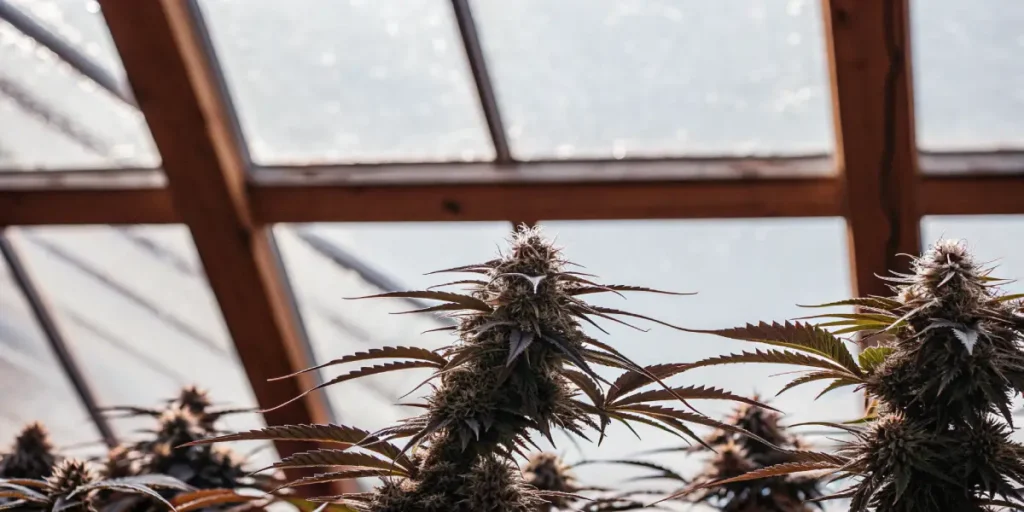
FAQs
What are the primary compounds responsible for cannabis odor?
The primary compounds responsible for cannabis odor are terpenes. These are aromatic oils produced in the plant’s trichomes. Terpenes like myrcene, limonene, and pinene play a major role in determining the distinct aroma of each cannabis strain. Different combinations and concentrations of these terpenes result in a wide range of scents, from earthy and musky to sweet and citrusy.
Aside from terpenes, flavonoids also contribute to the aroma. However, terpenes are the main players in how cannabis produces smell molecules. They are not only important for the plant’s scent but also for its flavor and potential therapeutic effects.
Knowing the specific roles of different terpenes can enhance a consumer’s ability to select strains that match their desired effects and flavors. This knowledge is particularly valuable in medical cannabis, where specific terpenes may contribute to therapeutic outcomes.
Growers can also benefit from this information by tailoring their cultivation practices to maximize the presence of desirable terpenes. This can lead to higher quality products that stand out in a competitive market, offering unique aromatic experiences to consumers.
How does the environment affect cannabis plant scent molecule production?
The environment significantly impacts how cannabis plant scent molecule production occurs. Key factors include temperature, light, and humidity. For instance, higher temperatures can increase terpene volatilization, leading to a stronger aroma. Conversely, cooler temperatures might preserve certain terpenes, affecting the scent profile.
Proper light exposure is also crucial, as it influences terpene synthesis. Different strains may require specific environmental conditions to maximize their aromatic potential. By optimizing these factors, growers can enhance the overall quality and aroma of their cannabis plants.
In addition to these factors, soil quality and nutrient availability play a crucial role in the biochemical process of cannabis smell. Rich, well-balanced soil can support healthier plants with more robust terpene profiles, leading to more pronounced and desirable aromas.
Environmental stressors, such as pest pressure or drought conditions, can also influence terpene production. While some stress can enhance terpene levels, excessive stress may harm the plant. Understanding the delicate balance between stress and growth is key to optimizing cannabis aroma.
Can the aroma of a cannabis strain indicate its effects?
The aroma of a cannabis strain can often give clues about its effects. This is because certain terpenes are associated with specific therapeutic properties. For example, strains with a high limonene content, known for their citrusy smell, may have uplifting and energizing effects.
Similarly, earthy and musky aromas, often linked to myrcene, might indicate more relaxing and sedative effects. While aroma can be a helpful guide, it’s important to consider other factors, such as cannabinoid content, when predicting a strain’s effects.
For medical cannabis users, understanding the relationship between aroma and effects can be particularly beneficial. By identifying strains with specific terpene profiles, users can better tailor their cannabis use to meet their therapeutic needs and preferences.
Aroma-based selection also allows recreational users to explore new strains with confidence, knowing that the scent can provide insight into the overall experience. This approach underscores the importance of how cannabis produces smell molecules in enhancing consumer choice.
What are some examples of strains with unique terpene profiles?
Strains with unique terpene profiles offer diverse aromatic experiences. For example, Blue Dream from Blimburn Seeds is celebrated for its sweet berry aroma, which comes from a rich terpene profile including myrcene and pinene. This combination provides a balanced aroma with both sweet and earthy notes.
Another example is Tangie, known for its vibrant citrus scent due to its high limonene content. These strains showcase how cannabis terpenes create aroma, providing enthusiasts with a wide selection of scents to explore.
Other notable strains include the earthy-scented OG Kush, which combines a robust mix of terpenes such as caryophyllene and limonene, and the pine-scented Jack Herer, known for its high pinene content. These examples demonstrate the versatility of cannabis in producing a wide range of aromatic profiles.
Exploring different strains with unique terpene compositions allows consumers to discover new favorites and broaden their appreciation of cannabis aromas. Each strain presents an opportunity to experience the intricate process of cannabis plant scent molecule production firsthand.
How can growers enhance terpene production in cannabis plants?
Growers can enhance terpene production by carefully managing their growing environment. Key strategies include maintaining optimal temperature and humidity levels, providing proper light exposure, and ensuring adequate nutrition. Stressing the plants slightly, such as through controlled drought or light stress, can also boost terpene production.
Additionally, selecting strains known for their aromatic profiles, like those available from Blimburn Seeds, can help growers achieve the desired scent. By focusing on these factors, growers can cultivate cannabis plants with heightened aromatic qualities.
Incorporating advanced cultivation techniques, such as hydroponics or aeroponics, can further optimize the growing conditions, leading to enhanced terpene synthesis. These methods allow for precise control over environmental variables, resulting in superior aromatic profiles.
Regularly monitoring the plant’s health and adjusting cultivation practices accordingly can also prevent issues that might hinder terpene production. By maintaining a healthy and thriving grow environment, growers can maximize the potential of their cannabis crops and ensure a rich olfactory experience for consumers.



